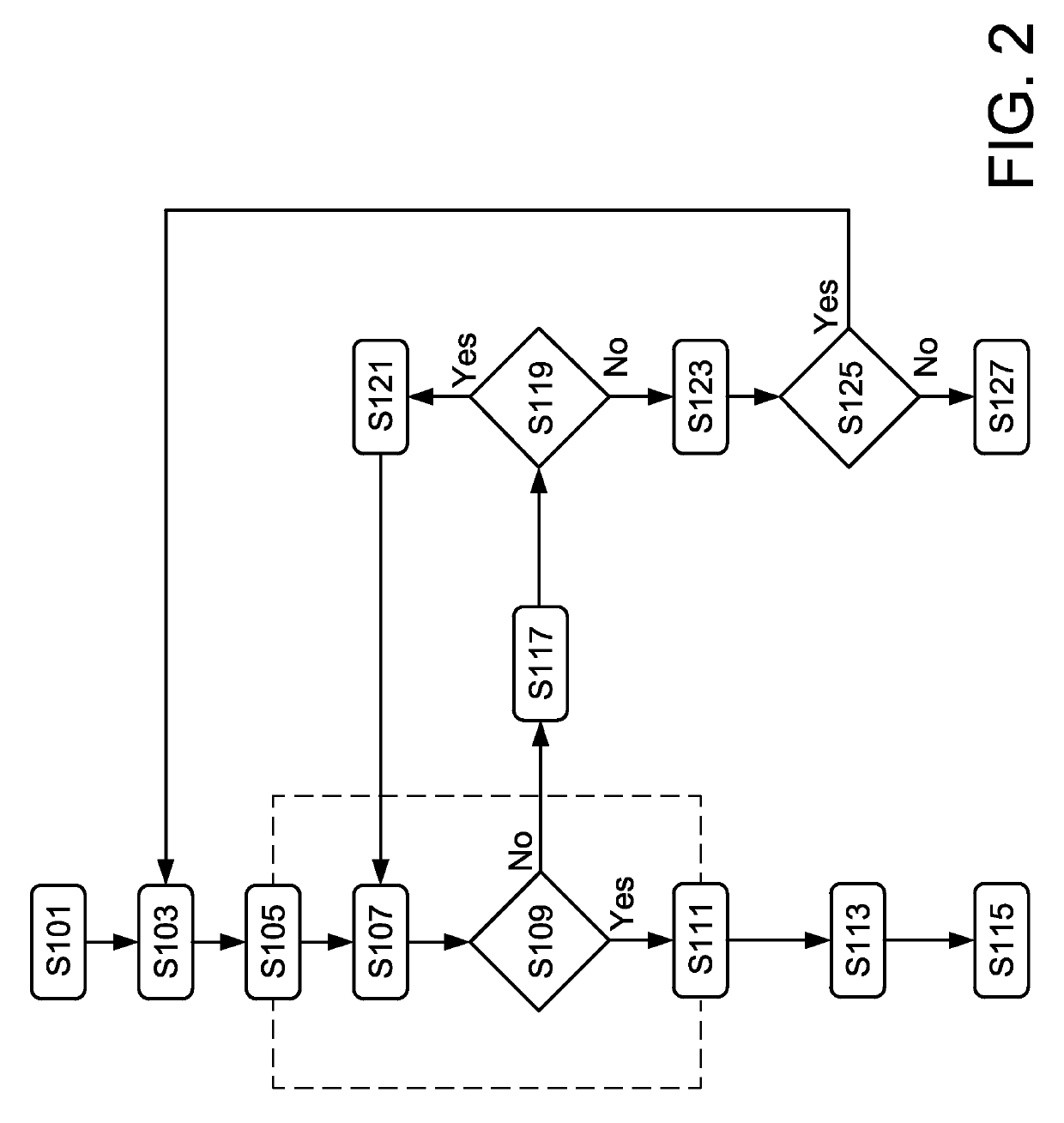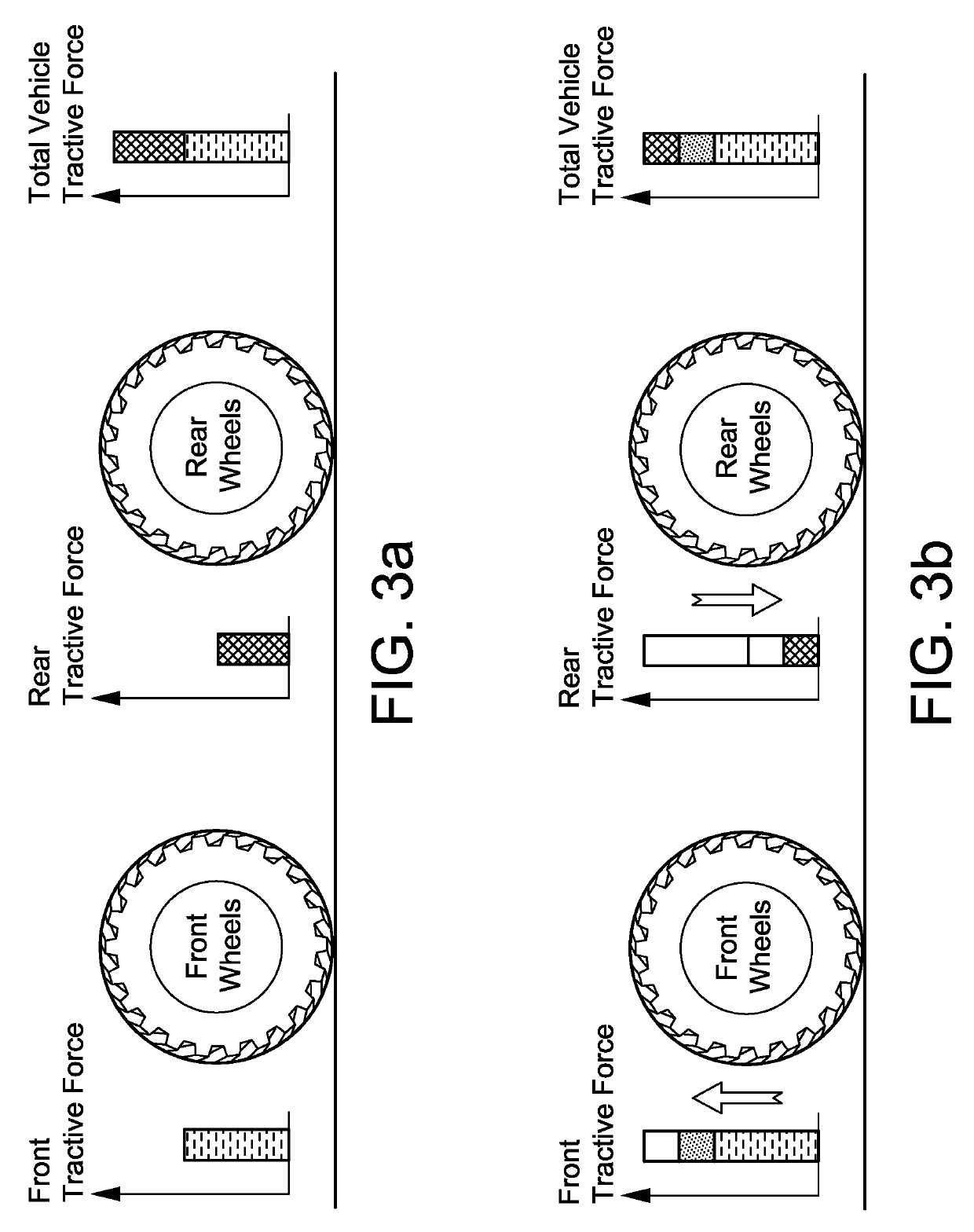Method for controlling gear shifting of a working machine
a gear shifting and working machine technology, applied in the direction of steering parts, external condition input parameters, constructions, etc., can solve the problems of reducing the traction force of the working machine, and affecting the driving experience of the driver, so as to reduce the vehicle speed and the available total traction force, the effect of speeding up and lowering the drop in vehicle speed
- Summary
- Abstract
- Description
- Claims
- Application Information
AI Technical Summary
Benefits of technology
Problems solved by technology
Method used
Image
Examples
Embodiment Construction
[0072]FIG. 1 shows a working machine 1 in the form of a wheel loader. The wheel loader 1 is to be considered as an example of a working machine having a drive system to which the method according to the invention can be applied.
[0073]The wheel loader 1 has a forward machine part / front frame 8 and a rear machine part / rear frame 9. Each of the machine parts / frames comprises two drive wheels 12. The rear machine part 9 comprises a cab 10 for an operator of the wheel loader 1. The machine parts 8, 9 are connected to each other in such a way that they can pivot relative to each other about a vertical axis by means of two hydraulic cylinders (steering cylinders) 7a, 7b which are arranged between the machine parts 8, 9 and attached thereto. The hydraulic cylinders 7a, 7b are thus arranged one on each side of a centre line extending in the longitudinal direction of the working machine 1 in order to turn or steer the wheel loader by means of the hydraulic cylinders. In other words, the wheel...
PUM
 Login to View More
Login to View More Abstract
Description
Claims
Application Information
 Login to View More
Login to View More - R&D
- Intellectual Property
- Life Sciences
- Materials
- Tech Scout
- Unparalleled Data Quality
- Higher Quality Content
- 60% Fewer Hallucinations
Browse by: Latest US Patents, China's latest patents, Technical Efficacy Thesaurus, Application Domain, Technology Topic, Popular Technical Reports.
© 2025 PatSnap. All rights reserved.Legal|Privacy policy|Modern Slavery Act Transparency Statement|Sitemap|About US| Contact US: help@patsnap.com



